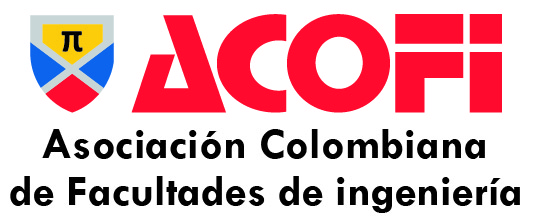Fuzzy system for external quality evaluation of software orientated to web
DOI:
https://doi.org/10.26507/rei.v7n13.173Keywords:
fuzzy logic, software metrics, linguistic variable, inference system, quality softwareAbstract
This paper presents a detailed study about external quality evaluation of a web software product using fuzzy logic as tool, thus allowing to evaluate the responses generated from the considerations that it's take into account for this purpose, making the system will be consolidated as an evaluation tool, based on the parameters that end users look to them.
Given the demands of end users and increased a greater amount of requirements against software products, it is necessary that the quality is embedded and implemented at different levels of the development process, therefore it’s necessary to have with new methods of evaluations to allow to know responses from the findings of users.
The methodology of the research process was selected quasi-experimental with application surveys that define characteristics and levels that each user needs and then translate these parameters into a software product, so you can compare its results with measurements of users.
As a first step was proposed to develop a preliminary investigation whose objective at describing the problem, formulate the hypotheses to be tested and determine the size of the sample. In addition, we selected different sites and indicators to evaluate each of the surveys. To validate the methodology and the developed tool, we performed a statistical analysis of the data.
This process showed that results obtained by system, compared to those defined by end user are very similar and therefore have not significant differences among them, being able to ensure that software evaluates the quality of Web systems effectively.
Downloads
References
Agresti, William. (2006). Lightweight software metrics: the P10 Framework. IT Professional – IEEE, 8(5), 12 – 16.
Agüero, Martín. (2006). Analizador Java Inteligente. C&T Universidad de Palermo, 53-72.
Akingbehin, Kiumi. (2009). Taguchi smaller-the-best software quality metrics. 10th ACIS International Conference on Software Engineering, Artificial Intelligences, Networking and Parallel/Distributed Computing.
Calero, Coral; Moraga, María; Piattini, Mario. (2008). Handbook of research on web information system quality. Editorial Advisory Board – Information Science Reference.
Chang, Ching-Liang. (2009). Fuzzy-logic-based programming. Editorial World Scientific.Advances in Fuzzy Logic. Applications and Theory.
Condori, Nelly; Belenguer, Jorge; Albiol, Manoli. (2006). Modelo de agregación basado en un sistema neurodifuso para un proceso de evaluación de calidad de productos de software. InfoUYClei – IEEE, 34-46.
Díaz, Gustavo; López, Jesús A. y Caicedo, Eduardo. (2009) Aplicación de la lógica difusa tipo dos en una planta didáctica en control de procesos industriales, respecto de las variables nivel y flujo. Sistemas & telemática, 7(13), 13–32.
Dick S.; Kandel, A. (2005). Computacional intelligence in software quality assurance. Editorial World Scientific – Machien Perception Artificial Intelligence. 63.
Fernández, Carlos; Fernández, Ignacio; Moya, David. (2008).Valoración de inmuebles mediante técnicas de lógica difusa. Universidad Complutense de Madrid.
Gall, C.; Lukins, S; Etzkorn, L; Gholston, S; Farrington, P; Utley, D; Fortune, J; Virani, S. (2008). Semantic software metrics computed from natural language design specifications. Software, IET – IEEE, 2(1), 17–26.
García, Socorro. (2009). Métodos para la comparación de alternativas mediante un Sistema de Ayuda a la Decisión (S.A.D.) y “Soft Computing”. Tesis Doctoral. Universidad Politécnica De Cartagena. PROQUEST.
Gutiérrez, Juan; Riss, Wolfgang; Ospina, Rodulfo. (2006). Bioindicación de la calidad del agua en la sabana de Bogotá – Colombia, mediante la utilización de la lógica difusa neuroadaptativa como herramienta. Caldasia, IEEE, 28(1), 45 -56.
Heck, Petra; Klabbers, Martijn; Eekelen, Marko. (2010). A software product certification model. Software Quality Journal, 18(1), 37-55.
Hofman, Radoslaw. (2009). Software quality perception. Advanced Techniques in Computing Sciences and Software Engineering. Springer.
Honglei, Tu; Wei, Sun; Yanan, Zhang. (2009). The research on software metrics and software complexity metrics. 2009 International Forum on Computer Science-Technology and Applications.
Kan, Stephen. (2009). Metrics and models in software quality engineering. Segunda Edición. Editorial Addison Wesley.
Lopez, Daniela; Agüero, Martín. (2007). Aplicación de métricas categóricas en sistemas de lógica difusa. Revista IEEE América Latina. 1(5).
Medina H., Santiago. (2006). Estado de la cuestión acerca del uso de la lógica difusa en problemas financieros. Cuadernos de Administración, 195-223.
Morillas, Antonio; Díaz, Bárbara. (2007). Qualitative answering surveys and soft computing. Fuzzy Economic Review, 12(1), 3-19.
Mukaidono, Masao. (2009). Fuzzy logic for beginners. Editorial World Scientific.
Pressman, Roger. (2008). Ingeniería de Software, Un enfoque práctico. 6 Edición. Barcelona: Editorial McGraw-Hill.
Ruiz, Gustavo; Peña, Alejandro; Castro, Carlos; Alaguna, Angela; Areiza, Luz y Rincón, Rafael. (2006). Modelo de evaluación de calidad de software basado en lógica difusa, aplicada a métricas de usabilidad de acuerdo con la Norma ISO/IEC 9126. Avances en Sistemas e Informática, 3(2), 25–29.
Scalone, Fernanda (2009). Estudio comparativo de los Modelos y Estándares de Calidad del Software (Tesis de Magister). Buenos Aires: Universidad Tecnológica Nacional.
Singh, Parvinder; Singh, Hardeep. (2006). A fuzzy-inference system based approach for the prediction of quality of reusable software components. Advanced Computing and Communication, IEEE. 349 – 352.
Soler, Vicenç. (2007). Lógica difusa aplicada a conjuntos imbalanceados: Aplicación a la detección del Síndrome de Down (Tesis doctoral). Universidad Autónoma de Barcelona.
Vergara, César; Gaviria, Horacio. (2009). Aplicaciones de la lógica difusa en la planificación de la producción. Universidad Nacional sede Medellín.
Yang, Bo; Yao, Lan; Huang, Hong-Zhong. (2007). Early software quality prediction based on a fuzzy neural network model. Third International Conference on Natural Computation (ICNC 2007) – IEEE.
Downloads
Published
How to Cite
Issue
Section
License
Total or partial reproduction of the documents published in the journal is authorized only when the source and author are cited.
| Article metrics | |
|---|---|
| Abstract views | |
| Galley vies | |
| PDF Views | |
| HTML views | |
| Other views | |









